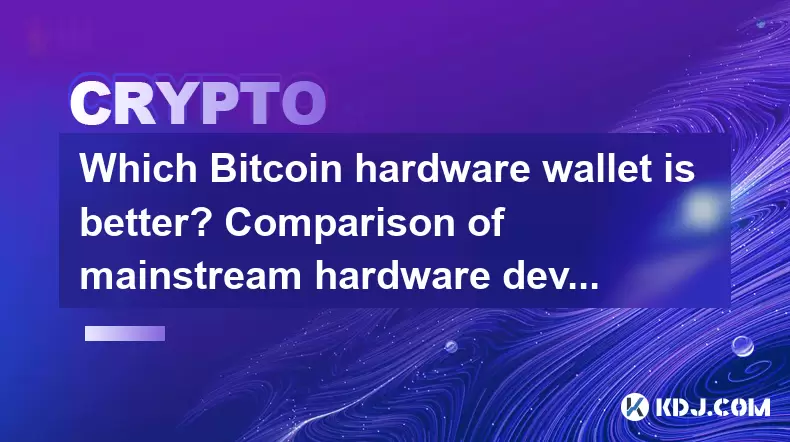-
 Bitcoin
Bitcoin $105,278.9859
4.61% -
 Ethereum
Ethereum $2,414.7741
8.20% -
 Tether USDt
Tether USDt $1.0007
0.05% -
 XRP
XRP $2.1600
7.53% -
 BNB
BNB $639.5433
3.75% -
 Solana
Solana $144.3830
9.37% -
 USDC
USDC $1.0001
0.02% -
 TRON
TRON $0.2742
3.84% -
 Dogecoin
Dogecoin $0.1640
8.57% -
 Cardano
Cardano $0.5811
7.49% -
 Hyperliquid
Hyperliquid $37.2466
5.28% -
 Sui
Sui $2.8243
14.84% -
 Bitcoin Cash
Bitcoin Cash $460.8816
2.22% -
 Chainlink
Chainlink $12.9580
11.75% -
 UNUS SED LEO
UNUS SED LEO $9.1359
1.23% -
 Avalanche
Avalanche $18.2302
10.30% -
 Stellar
Stellar $0.2463
7.80% -
 Toncoin
Toncoin $2.9151
7.18% -
 Shiba Inu
Shiba Inu $0.0...01163
9.79% -
 Hedera
Hedera $0.1532
14.01% -
 Litecoin
Litecoin $85.3310
6.29% -
 Monero
Monero $308.8215
2.90% -
 Ethena USDe
Ethena USDe $1.0007
0.03% -
 Polkadot
Polkadot $3.4259
9.42% -
 Dai
Dai $1.0002
0.01% -
 Bitget Token
Bitget Token $4.1742
3.19% -
 Uniswap
Uniswap $6.8272
8.53% -
 Pepe
Pepe $0.0...09939
12.29% -
 Pi
Pi $0.5358
6.03% -
 Aave
Aave $257.3092
12.83%
BTC super trend indicator parameter optimization research
Optimizing the BTC super trend indicator's ATR period and multiplier enhances trading accuracy by adapting to market volatility and reducing false signals.
Jun 24, 2025 at 03:42 am

What Is the BTC Super Trend Indicator?
The BTC super trend indicator is a popular technical analysis tool used in cryptocurrency trading, especially for Bitcoin (BTC). It helps traders identify potential buy and sell signals based on market trends. This indicator overlays on price charts and uses average true range (ATR) values to determine volatility and set dynamic stop-loss levels. The effectiveness of this indicator can be significantly improved by optimizing its parameters according to specific market conditions and trading strategies.
Understanding how the super trend works is crucial before proceeding with parameter optimization. The formula typically involves two main inputs: the multiplier and the period for ATR calculation.
Why Parameter Optimization Matters for BTC Trading
In BTC trading, market dynamics change rapidly due to high volatility and external factors like news events or macroeconomic shifts. Optimizing the super trend indicator's parameters allows traders to adapt more effectively to these changes and improve trade accuracy.
- Customization for different timeframes: Short-term scalpers may require faster signal generation, while long-term investors might prefer smoother, less reactive settings.
- Adaptation to market phases: Bull markets behave differently from bear markets; optimized parameters help tailor responses accordingly.
- Reduction of false signals: Fine-tuning reduces noise and minimizes misleading alerts that could lead to losses.
Parameter optimization isn't just about tweaking numbers; it's about aligning the indicator with your personal trading psychology and strategy.
Key Parameters to Optimize in the Super Trend Indicator
There are primarily two adjustable parameters in the super trend formula:
- ATR Period: Determines how many periods (e.g., 10, 14, 20) are used to calculate the Average True Range. A higher value smooths out volatility but reacts slower to price changes.
- Multiplier: Used to scale the ATR value when calculating upper and lower bands. Common values include 1.5, 2, or 3. Higher multipliers create wider bands, reducing sensitivity.
Here’s a breakdown of how changing these affects performance:
- Increasing the ATR period makes the indicator less responsive but potentially more reliable during stable market conditions.
- Raising the multiplier increases the distance between the price and the trend line, filtering out smaller fluctuations but possibly missing early entries.
Traders should experiment with combinations of these parameters using historical data to find optimal setups.
Step-by-Step Guide to Optimizing Super Trend Parameters for BTC
To optimize the super trend indicator for BTC, follow this detailed process:
- Select a reliable backtesting platform: Tools like TradingView, MetaTrader, or Python-based platforms such as Backtrader allow for custom script testing.
- Choose a relevant timeframe: Decide whether you're optimizing for intraday (e.g., 1-hour), daily, or weekly BTC charts.
- Define performance metrics: Use win rate, risk-reward ratio, maximum drawdown, or profit factor to evaluate results.
- Run multiple tests with varying parameters: Try ATR periods from 7 to 21 and multipliers from 1 to 3 to observe performance differences.
- Analyze results across different market phases: Test during both bullish and bearish cycles to ensure robustness.
It's important to avoid overfitting by testing across extended historical periods and not just cherry-picking favorable data points.
Common Pitfalls in Super Trend Parameter Optimization
Despite its benefits, parameter optimization comes with risks and challenges:
- Overfitting to past data: Excessively tailoring parameters to historical performance can lead to poor real-time results.
- Ignoring transaction costs: Frequent trades triggered by sensitive settings may erode profits due to fees.
- Neglecting psychological factors: Even an optimized system won’t work if the trader doesn’t trust or consistently apply it.
Additionally, some traders fall into the trap of assuming one-size-fits-all settings, which rarely holds true in BTC’s volatile environment.
Frequently Asked Questions (FAQ)
Q: Can I use the same super trend parameters for other cryptocurrencies?
While BTC parameters may offer a starting point, altcoins often exhibit different volatility patterns. It’s recommended to conduct separate optimizations for each asset.
Q: How often should I re-optimize my super trend settings?
Market conditions evolve, so periodic re-evaluation—quarterly or biannually—is advisable, especially after major market shifts.
Q: Does optimizing the super trend guarantee profits in BTC trading?
No. Optimization improves signal quality, but success also depends on execution discipline, risk management, and broader market understanding.
Q: Are there automated tools for super trend parameter optimization?
Yes, platforms like TradingView and Python libraries such as bt or backtesting.py offer automated optimization features through walk-forward analysis and genetic algorithms.
Disclaimer:info@kdj.com
The information provided is not trading advice. kdj.com does not assume any responsibility for any investments made based on the information provided in this article. Cryptocurrencies are highly volatile and it is highly recommended that you invest with caution after thorough research!
If you believe that the content used on this website infringes your copyright, please contact us immediately (info@kdj.com) and we will delete it promptly.
- Texas, Bitcoin, and the Reserve: How the Lone Star State is Pioneering Crypto Adoption
- 2025-06-24 10:45:12
- DOGE Rally: Bullish Surge or Last Shakeout?
- 2025-06-24 10:25:13
- Solaxy's Uniswap Debut: A New Crypto Listing Shaking Up the Market
- 2025-06-24 10:25:13
- Coinbase, Tokenized Trading, and the US Senate: A New Era for Crypto?
- 2025-06-24 10:45:12
- Bitcoin, Crypto Signals, and Hyperliquid: What's the Hype?
- 2025-06-24 11:05:12
- Fadillah's Uzbekistan Mission: Sparking Cooperation in Energy, Tourism, and Education
- 2025-06-24 11:05:12
Related knowledge

Which Bitcoin hardware wallet is better? Comparison of mainstream hardware devices
Jun 16,2025 at 02:08am
What Is a Bitcoin Hardware Wallet?A Bitcoin hardware wallet is a physical device designed to securely store the private keys associated with your cryptocurrency holdings. Unlike software wallets, which are more vulnerable to online threats, hardware wallets keep private keys offline, significantly reducing the risk of unauthorized access. These devices ...

What are Bitcoin non-custodial wallets? Self-controlled private key recommendation
Jun 16,2025 at 11:29pm
Understanding Bitcoin Non-Custodial WalletsA Bitcoin non-custodial wallet is a type of digital wallet where users retain full control over their private keys. Unlike custodial wallets, which are managed by third-party services such as exchanges, non-custodial wallets ensure that only the user can access and manage their funds. This means no intermediary...

What is Bitcoin BIP44 standard? Multi-currency wallet path specification
Jun 15,2025 at 04:08pm
Understanding the BIP44 Standard in Bitcoin and CryptocurrencyThe BIP44 standard, which stands for Bitcoin Improvement Proposal 44, is a widely adopted hierarchical deterministic wallet structure used across various cryptocurrencies. It defines a structured path format that enables wallets to support multiple currencies while maintaining consistency and...

What is Bitcoin HD wallet? Advantages of layered deterministic wallets
Jun 16,2025 at 03:56pm
Understanding Bitcoin HD WalletsA Bitcoin HD wallet, or Hierarchical Deterministic wallet, is a type of cryptocurrency wallet that generates multiple keys and addresses from a single seed phrase. Unlike traditional wallets that create random private keys for each transaction, an HD wallet follows a structured hierarchy to derive keys in a deterministic ...

Is Bitcoin zero-confirmation transaction risky? Zero-confirmation usage scenarios
Jun 15,2025 at 03:57am
Understanding Zero-Confirmation Transactions in BitcoinBitcoin zero-confirmation transactions, often referred to as 'unconfirmed transactions,' are those that have been broadcast to the network but have not yet been included in a block. This means they have not received any confirmations from miners. While these transactions can be useful in certain con...

What is Bitcoin P2SH address? Difference between P2SH and P2PKH
Jun 16,2025 at 09:49pm
Understanding Bitcoin P2SH AddressesA Pay-to-Script-Hash (P2SH) address in the Bitcoin network is a type of address that allows users to send funds to a script hash rather than directly to a public key hash, as seen in earlier address formats. This innovation was introduced through BIP 16, enhancing flexibility and enabling more complex transaction type...

Which Bitcoin hardware wallet is better? Comparison of mainstream hardware devices
Jun 16,2025 at 02:08am
What Is a Bitcoin Hardware Wallet?A Bitcoin hardware wallet is a physical device designed to securely store the private keys associated with your cryptocurrency holdings. Unlike software wallets, which are more vulnerable to online threats, hardware wallets keep private keys offline, significantly reducing the risk of unauthorized access. These devices ...

What are Bitcoin non-custodial wallets? Self-controlled private key recommendation
Jun 16,2025 at 11:29pm
Understanding Bitcoin Non-Custodial WalletsA Bitcoin non-custodial wallet is a type of digital wallet where users retain full control over their private keys. Unlike custodial wallets, which are managed by third-party services such as exchanges, non-custodial wallets ensure that only the user can access and manage their funds. This means no intermediary...

What is Bitcoin BIP44 standard? Multi-currency wallet path specification
Jun 15,2025 at 04:08pm
Understanding the BIP44 Standard in Bitcoin and CryptocurrencyThe BIP44 standard, which stands for Bitcoin Improvement Proposal 44, is a widely adopted hierarchical deterministic wallet structure used across various cryptocurrencies. It defines a structured path format that enables wallets to support multiple currencies while maintaining consistency and...

What is Bitcoin HD wallet? Advantages of layered deterministic wallets
Jun 16,2025 at 03:56pm
Understanding Bitcoin HD WalletsA Bitcoin HD wallet, or Hierarchical Deterministic wallet, is a type of cryptocurrency wallet that generates multiple keys and addresses from a single seed phrase. Unlike traditional wallets that create random private keys for each transaction, an HD wallet follows a structured hierarchy to derive keys in a deterministic ...

Is Bitcoin zero-confirmation transaction risky? Zero-confirmation usage scenarios
Jun 15,2025 at 03:57am
Understanding Zero-Confirmation Transactions in BitcoinBitcoin zero-confirmation transactions, often referred to as 'unconfirmed transactions,' are those that have been broadcast to the network but have not yet been included in a block. This means they have not received any confirmations from miners. While these transactions can be useful in certain con...

What is Bitcoin P2SH address? Difference between P2SH and P2PKH
Jun 16,2025 at 09:49pm
Understanding Bitcoin P2SH AddressesA Pay-to-Script-Hash (P2SH) address in the Bitcoin network is a type of address that allows users to send funds to a script hash rather than directly to a public key hash, as seen in earlier address formats. This innovation was introduced through BIP 16, enhancing flexibility and enabling more complex transaction type...
See all articles
























































































